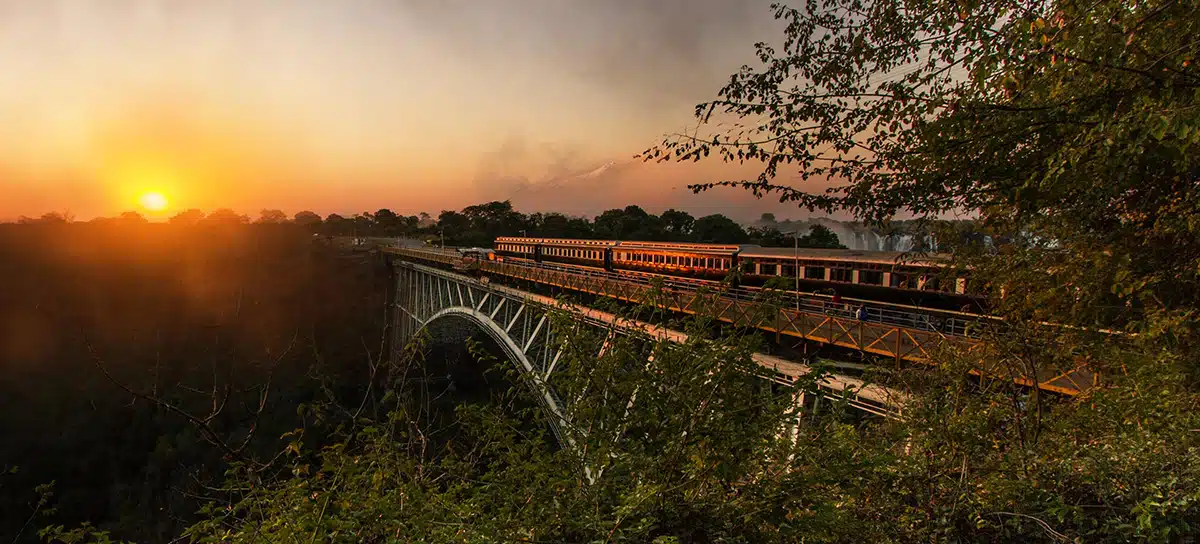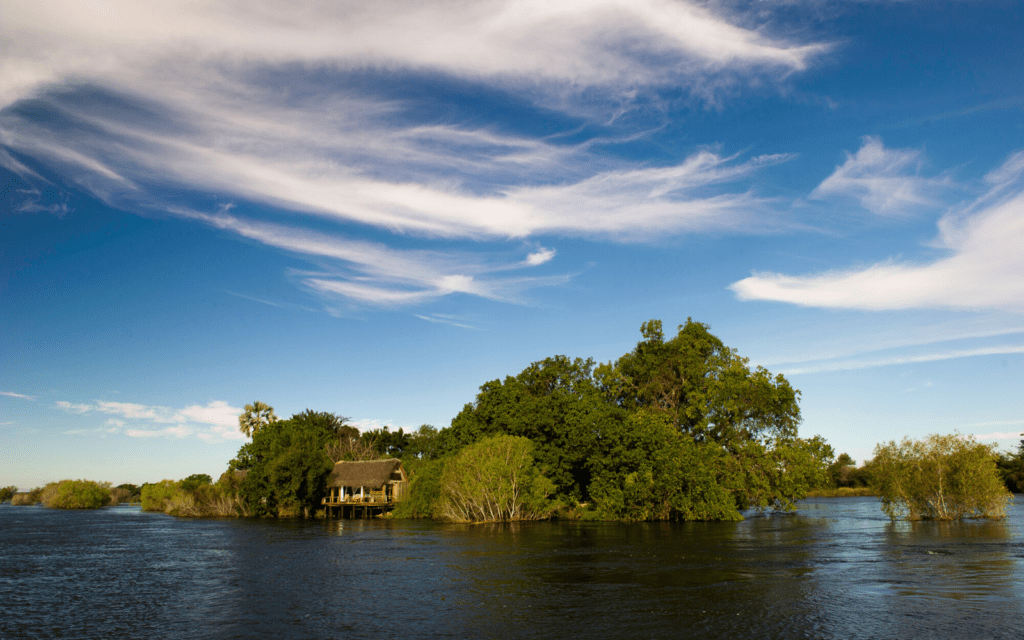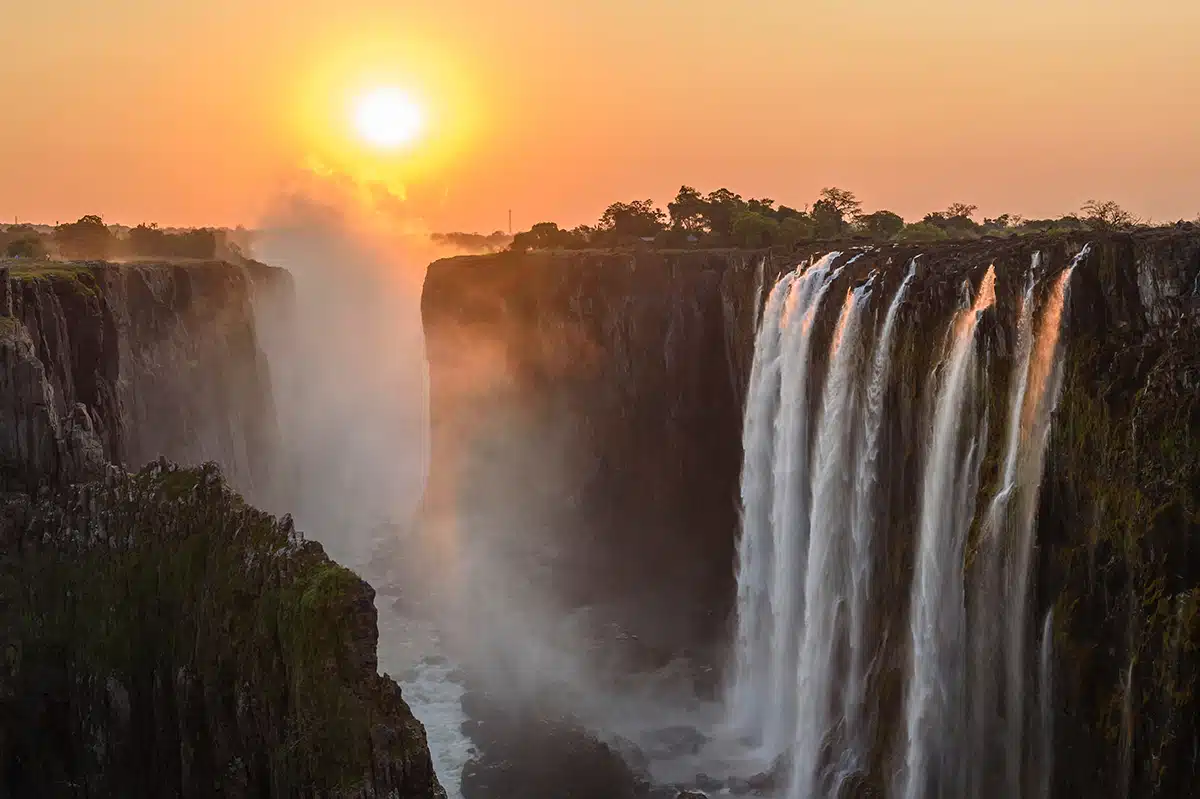MOSI-OA-TUNYA
The Wonder of Victoria Falls
Victoria Falls is the biggest sheet of falling water on earth.
It is one-and-a-half times wider and twice as high as Niagara Falls in the United States, and at just over a mile wide and over 300 feet (100m) high, with 145 million gallons of water rushing over the precipice every minute, the spray of water from Victoria Falls is visible from up to 43 miles (70km) away during high water.
Victoria Falls is known as Mosi-oa-Tunya – or the ‘Smoke that Thunders’ in local dialect – but they are actually neither wider than Khone Falls nor higher than Angel Falls.
On the Zimbabwe side of the Falls you can explore a rainforest on foot that boasts unique plant and animal life and is also the only place on earth where it never stops raining.
When the moon is full the park stays open late into the night and you can wander around and spy moonbows. This is just about as incredibly magical as it sounds… or maybe even a little more.
It is little wonder that visiting the iconic Victoria Falls is on the bucket list of many of our travelers.
Interestingly, Victoria Falls has also become the adrenaline capital of Africa in recent years. From whitewater rafting, bungee jumping, and abseiling to canoe-based safaris and helicopter trips around the area, there is so much to do around Victoria Falls that it is a wonderful and thrilling destination for travelers who need to keep busy and there is something for every member of the family.
If visiting Victoria Falls is on your bucket list,
here is what you need to know to start planning.
The Nomenclature
To be clear, “Victoria Falls” is the name of the waterfall itself as well as the town and National Park on the Zimbabwean side of the falls. Victoria Falls (the waterfall) is shared between Zimbabwe and Zambia, forming the border between these two countries. The town on the Zambian side is called Livingstone.
Victoria Falls itself sits on the Zambian side. The Batoka Gorge into which the falls cascade is shared by Zambia and Zimbabwe.

Getting from one side to the other
The second gorge connects the two countries with a bridge that was first called the Great Zambezi or Zambezi Bridge but is now known as the Victoria Falls Bridge. It was originally part of Cecil Rhodes’ Cape-to-Cairo railway dream and was declared open in 1905. You can walk across (maybe stopping to bungee jump if the urge takes you) but our favorite way of visiting the bridge is by a vintage steam locomotive.

What is the best time of year to visit Victoria Falls?
To experience the falls at it’s greatest volume, consider visiting from February to May. These months immediately follow the heavy rains in Angola that make the Zambezi River rise. The result is an experience that is akin to walking inside a power shower.
However, if you are planning on combining Victoria Falls with other destinations in Southern Africa, other months may be preferable. June to August is a great time to explore neighboring Botswana and experience the falls, during which time you can expect great game viewing, warm days, cool nights, little to no rain and still witness plenty of water thundering over the falls.
During the dry winter period, October through November, the water level of the Zambezi River is at its lowest and the weather is hot and humid. While low water levels guarantee you’ll have the best views of the falls, with no misty spray obstructing views, some areas of the falls (especially the view from the Zambian side) can cease flowing completely during this time. There are also a number of activities that can only be done when the water is low – like swimming in the famous Devil’s or Angel’s pools from Livingstone Island.
The ideal scenario would be to visit Victoria Falls when it is dry on one journey and return at another time to see it in full flood.
Bonus fact: Queen Victoria never visited the Falls.
Where are the best places to stay when visiting Victoria Falls?
There are a number of fabulous places to stay on both the Zambian and Zimbabwean side of the falls. A few of our favorites include Ilala Lodge, the Victoria Falls River Lodge, and Tongabezi.

However, regardless of where you stay, be sure to see the falls from both sides, which is easy to do in the same day and with the newly-implemented Kaza Univisa which allows dual entry into both countries, as well as day trips to Botswana.
The Zimbabwe side tends to offer better, more iconic views of the falls and the view from this side offers water falling year round. From the Zambian side of the falls, the geological formation is always clear and there is also the incredible opportunity to visit Livingstone Island and Devil’s Pool from Zambia.
If Victoria Falls is on your bucket list, contact us today and start planning your African adventure.


